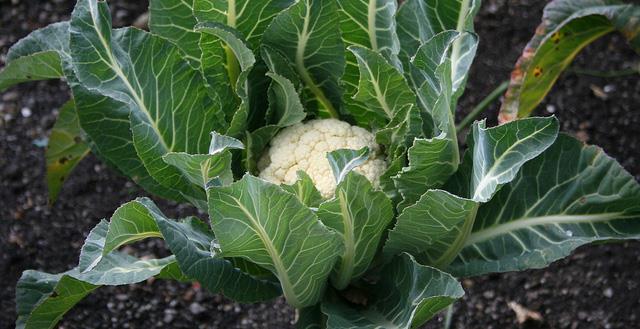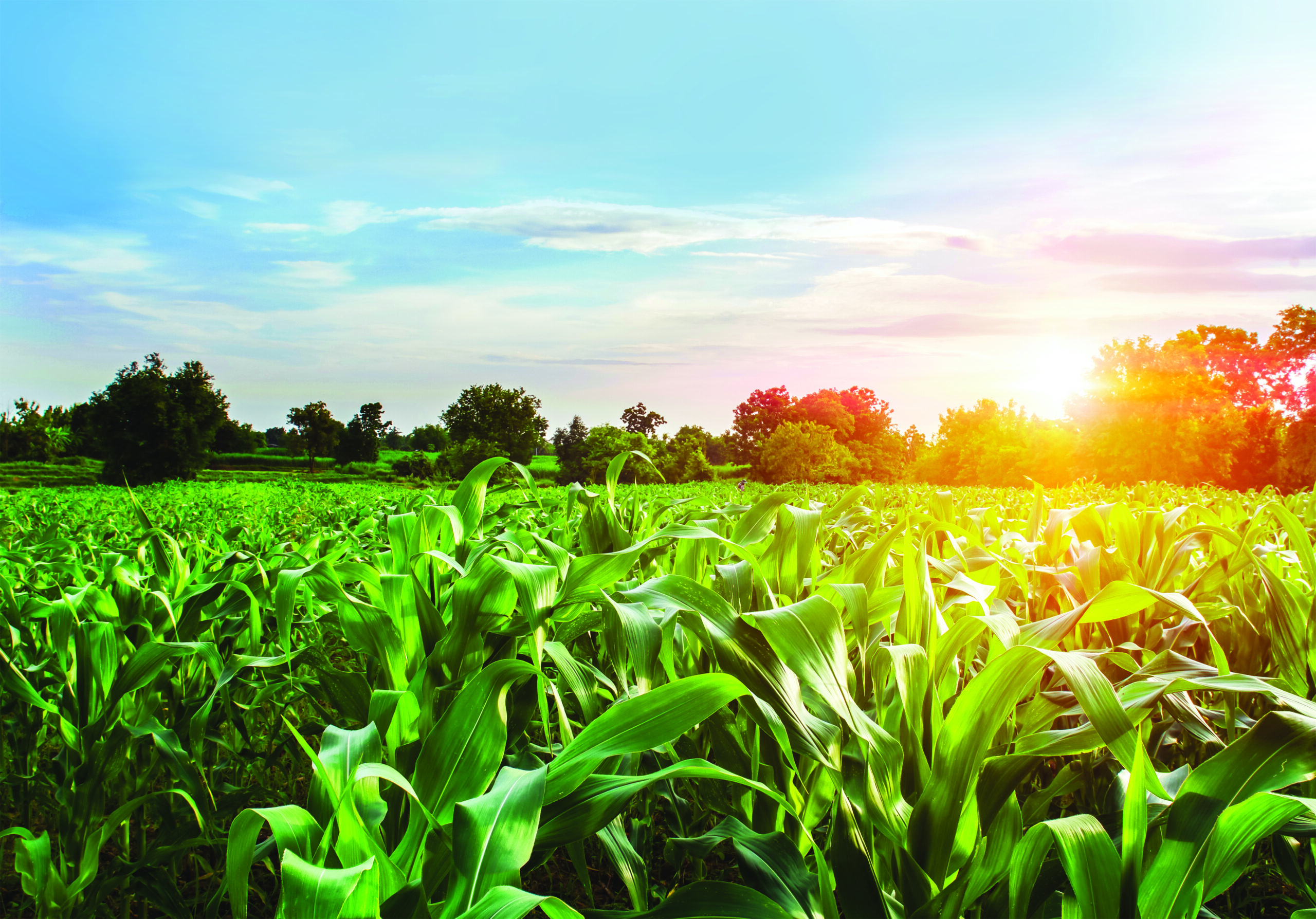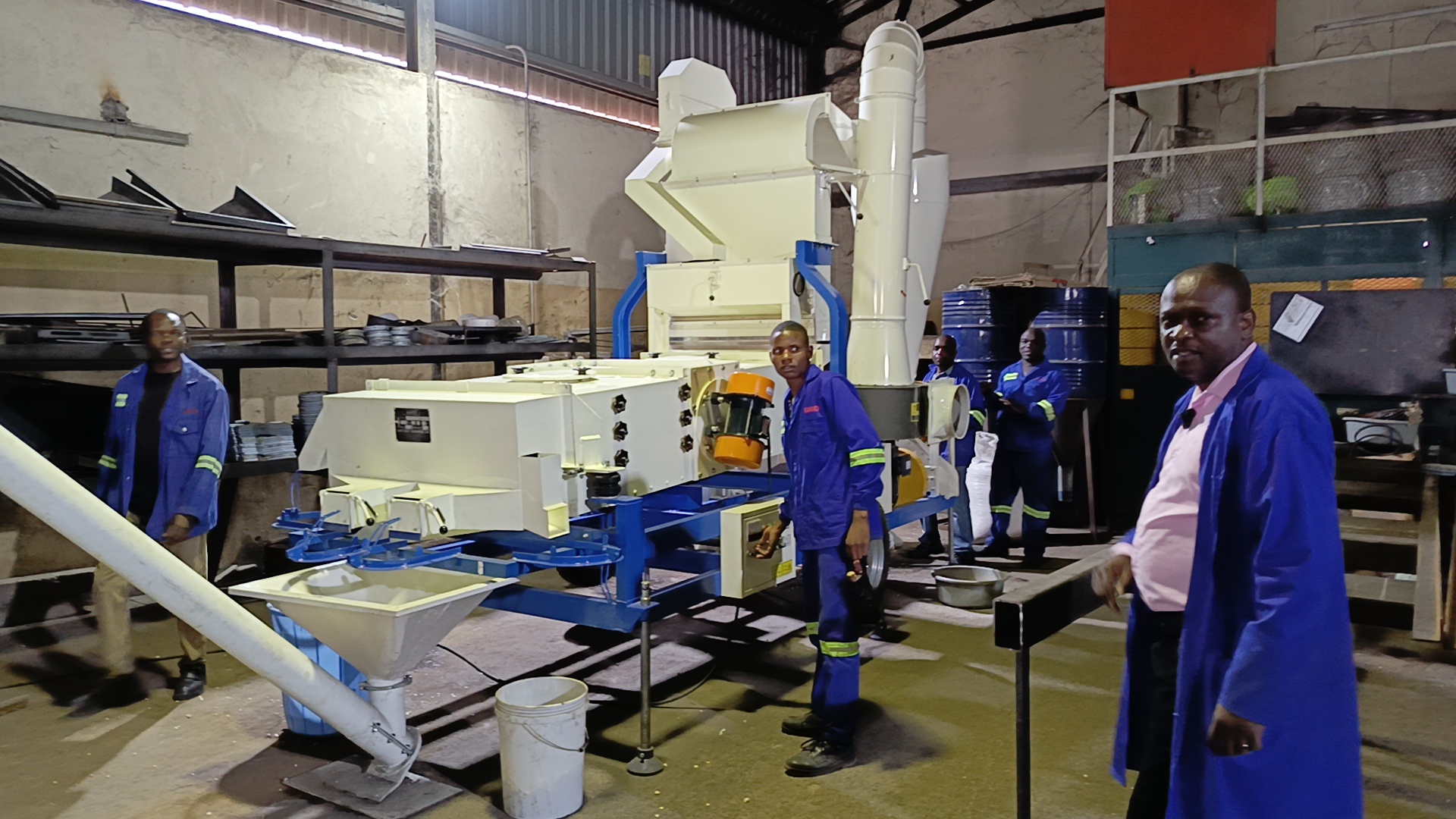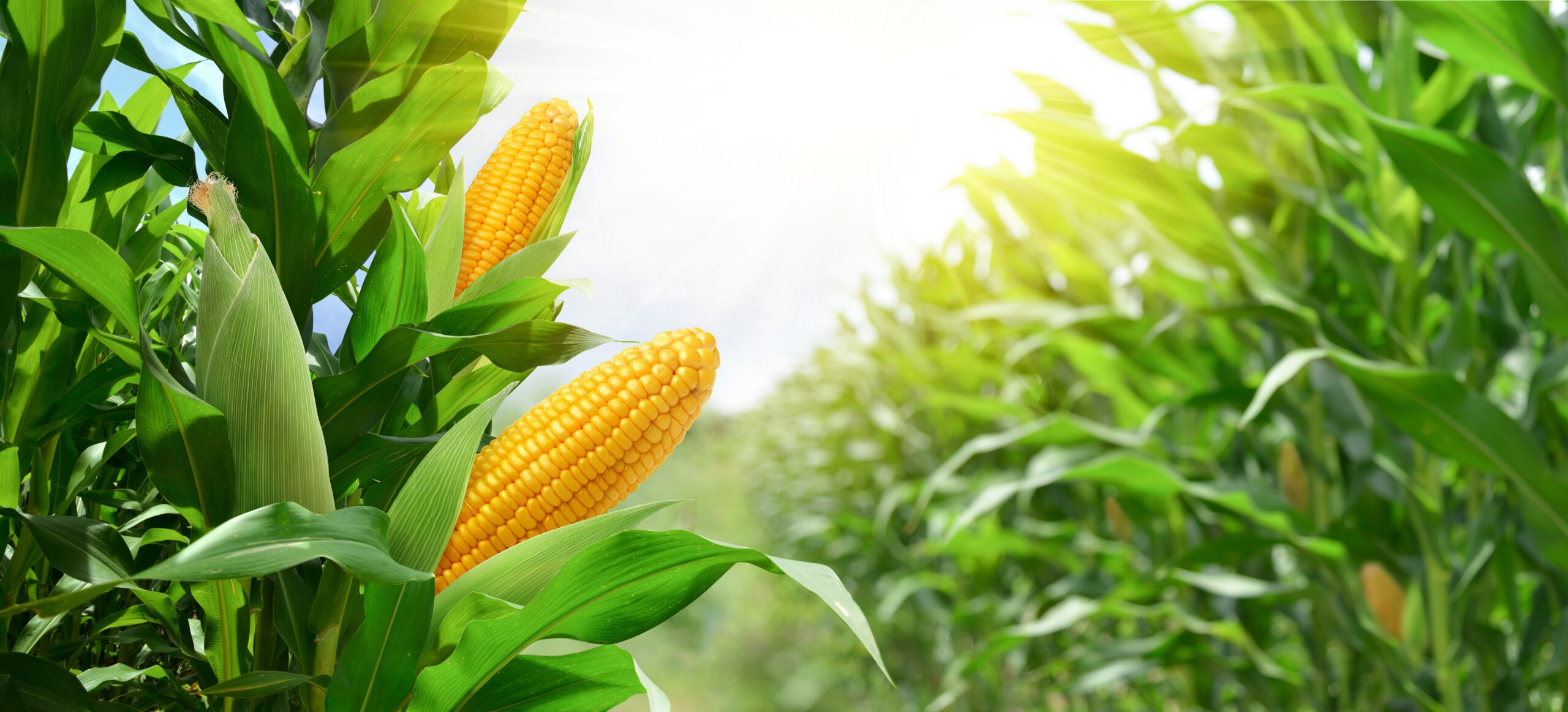Cauliflower is a versatile vegetable. Crunchy and mild, it works as both a supplement and a substitute for many dishes.
Growing cauliflower is very similar to growing cabbage. Nevertheless, some important points need to be considered to ensure successful production of cauliflower.
Origin and distribution
Cauliflower, Brassica oleracea var. botrytis, belongs to the Brassicaceae (mustard) family, which also includes cabbage, Brussels sprouts, broccoli, mustard, and rape seed (canola). Cauliflower was discovered in the Mediterranean region over 2 000 years ago, and has been cultivated in the United States since the 18th century. The edible part of the plant is a cluster of immature flower buds referred to as a “curd”.
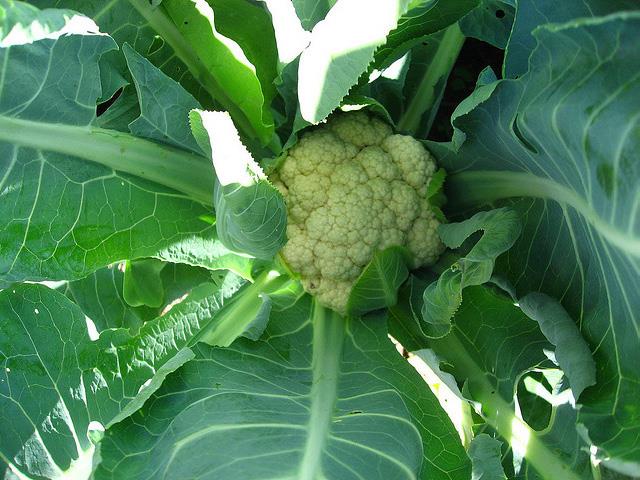
Cauliflower head developing.
Climatic requirements
Cauliflower is a cool season crop with distinct temperature requirements for producing a marketable curd (the edible immature flower buds). The optimal temperature range for growth and development is 18 to 20°C during the day.
At temperatures of 27°C and higher, cauliflower tends to have small jacket leaves, small curds, solar yellowing, and raciness of the curd. At freezing temperatures, the curds may be damaged, and when that happens, secondary decay occurs.
Soil requirements
Cauliflower is grown on many soil types, from clay to loamy sand. Soils with a high moisture-holding capacity are preferred during the dry season because water stress adversely affects curd development. In the rainy season, soils that dry rapidly after rain are preferred so that farm equipment can enter to perform cultivating and harvesting operations.
Cauliflower is moderately sensitive to salinity in soil and water. Although no salinity threshold for yield reduction has been established for cauliflower, it is considered more tolerant to salinity than lettuce but somewhat less tolerant to salinity than broccoli.
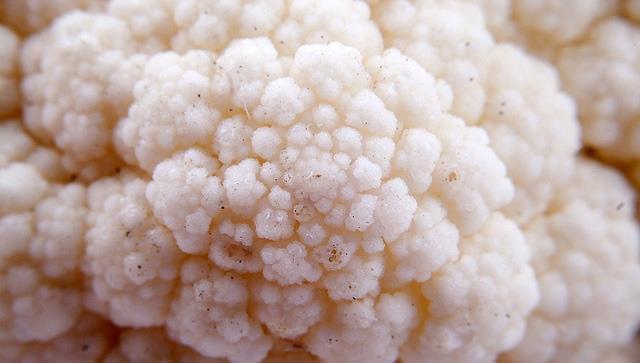
Close-up of cauliflower florets.
Cultivation practices
Soil preparation
Proper soil preparation is important when planting cauliflower. The best way to determine your soil conditions is to have a soil test performed. Cauliflower requires a fairly fertile, well-drained soil with a good water holding capacity, and a pH range of 6 to 7. Working the soil to break up any hardpan, and incorporating manure or compost to a depth of 15 to 20 cm are normally recommended. If soil must be treated for root-knot nematode, this must be done after the soil is prepared, and an interval of 2 to 3 weeks after treatment must be allowed before planting.
Planting
Cauliflower is normally not directly seeded. The majority of growers use greenhouse-grown seedlings. With transplants, more uniform plant stands and earlier harvests are possible. Transplanted cauliflower is placed in single rows on beds 100 cm wide and spaced 30 cm apart. Plants are typically placed with the crown below the soil surface to reduce damage caused by winds.
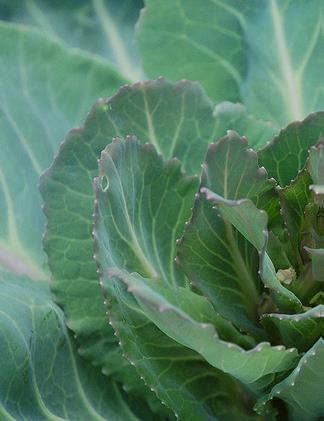
Cauliflower leaves.
Fertilisation
Cauliflower demands a great deal of nutrients, and care must be taken to provide adequate nutrition to the crop. Phosphorus fertilisation should be applied based on the soil-test level of bicarbonate-extractable phosphorus. The need for potassium (K) can also be determined from soil tests; soils with more than 150 ppm of ammonium acetate exchangeable potassium have sufficient quantities of potassium for the crop. Potassium fertilisation presents no environmental risk and many growers routinely apply potassium, even in fields with high exchangeable soil potassium.
Irrigation
Cauliflower requires adequate soil moisture to maximise yield and quality. It is irrigated most frequently with furrow and overhead sprinklers. Most growers use sprinkler irrigation to establish seedlings, and either continue with sprinklers or switch to furrow or drip irrigation for the remainder of the crop. After transplants are established, sprinkler irrigations are usually applied at weekly intervals during the spring and summer.
Weed control
Integrated weed management should be practised prior to planting cauliflower. Management steps include crop rotation, field selection, weed removal before weeds produce seed, and preplant irrigation to stimulate weed emergence so that they can be killed off with herbicides, propane flaming or shallow tillage. Weed control is most critical for the first 30 days following transplanting until the crop begins to close the leaf canopy and shade out weeds.
Pest and disease control
Insects
The most damaging insect pests are worms, aphids, and whiteflies, depending on the region and time of year. The cabbage aphid (Brevicoryne brassicae) is the most important pest, though larvae of the cabbage maggot (Delia radicum) can chew and damage the hypocotyls of young transplants. Turnip aphid (Hyadaphis erysimi) and green peach aphid (Myzus persicae) are more common pests
To control disease:
Adhere to a strict preventative programme that includes long crop rotations (of at least 3 years) with non-brassica crops. Use clean starting mixes when sowing and follow good sanitation practices.
Black rot
A serious bacterial disease of cauliflower and other brassicas, black rot, is often identified in its earliest stages by dull yellow, V-shaped lesions on the leaf margins. As the disease progresses, affected leaves may die and turn brown to black.
Favoured by warm, wet, or foggy conditions, this disease can lead to total crop loss. Because black rot can be seedborne, control starts with disease-free seed. Use only seed that have been tested to be free of black rot in a sample of 30 000 seeds. Crop rotation is also a fundamental practice to prevent black rot. Applications of copper fungicides may help limit further spread when disease severity is low.
Alternaria
The primary symptom of this fungal disease is yellow, dark brown to black, circular leaf spots or lesions on the curds. It also is favoured by warm tem peratures and high humidity. Although initial damage is primarily cosmetic, infection can lead to secondary infection and total crop loss.
Harvesting and handling
Cauliflower is hand-harvested in the field. Fields are normally harvested two to four times or more, depending on the market. Mature heads of 15 cm or larger are hand-selected and trimmed of excess wrapper leaves, making a crown-cut shape. Smaller heads will usually grow enough to be harvested as the next larger size within a couple of days. The heads are placed on a harvesting platform, sorted, covered with plastic wrap, and packed by size. Cauliflower should never be allowed to roll or have the white curd make contact with objects or work surfaces because the curd readily bruises and turns brown. Damaged curds may even be subject to post-harvest decay.
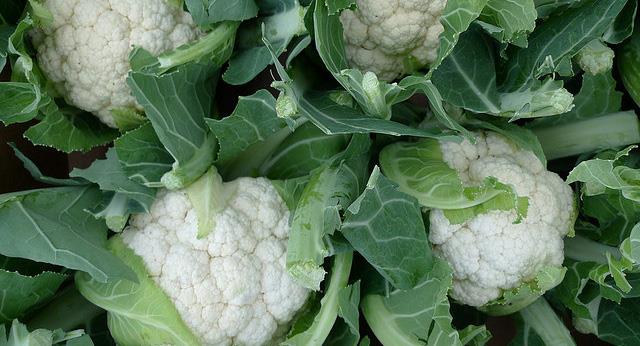
Harvested cauliflower heads.
Importance and uses
Human consumption, health benefits and concerns:
Cauliflower can be roasted, boiled, fried, steamed or eaten raw. Steaming or microwaving better preserves anti-cancer compounds than boiling. When cooking, the outer leaves and thick stalks are removed, leaving only the florets. The leaves are also edible, but are most often discarded. The florets should be broken into similar-sized pieces so that they are cooked evenly. After eight minutes of steaming, or five minutes of boiling, the florets should be soft, but not mushy (depending on size).
Cauliflower is low in fat, but high in dietary fibre, folate, water, and vitamin C, possessing a high nutritional density. Cauliflower contains several phyto-chemicals, common in the cabbage family, which may be beneficial to human health. A high intake of cauliflower has been associated with reduced risk of aggressive prostate cancer.
The information provided in this article is credited to the South African Department of Agriculture, Forestry and Fisheries. For more information, visit their website at www.daff.gov.za, contact them on +27(0)12-319-6072 or send an e-mail to DPP@nda.agric.za.

